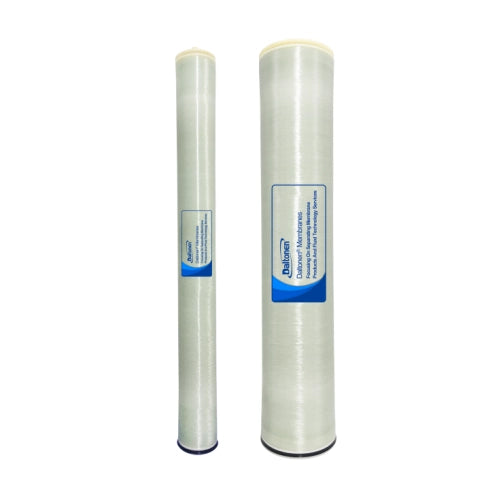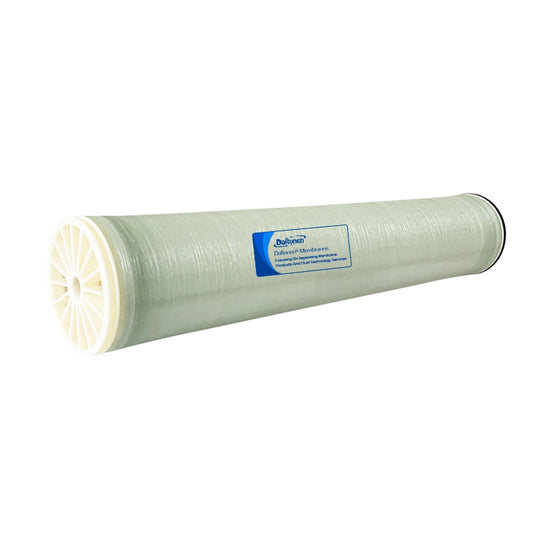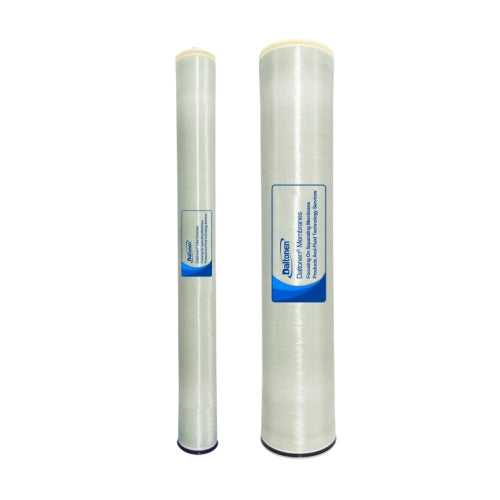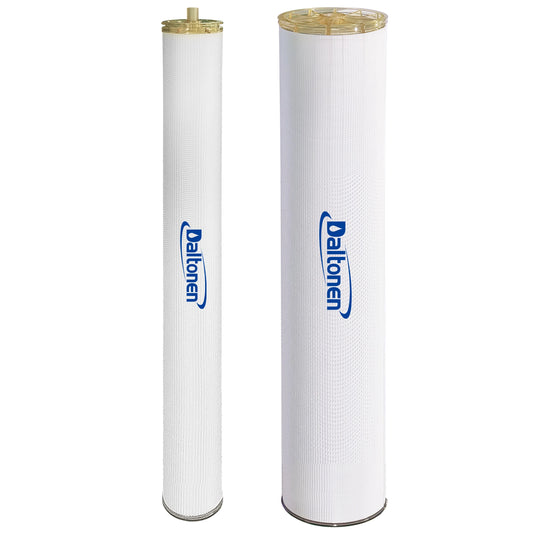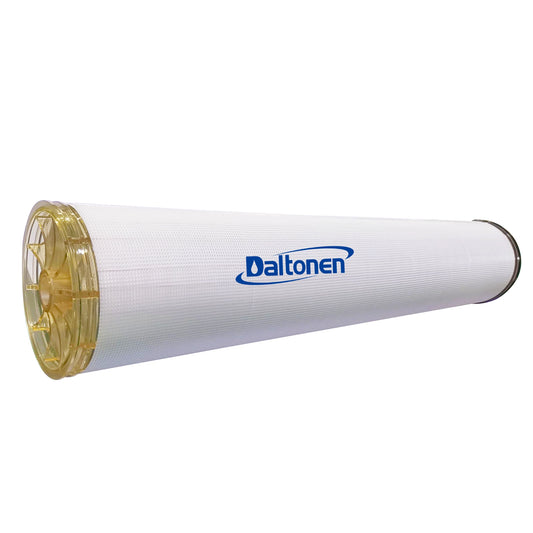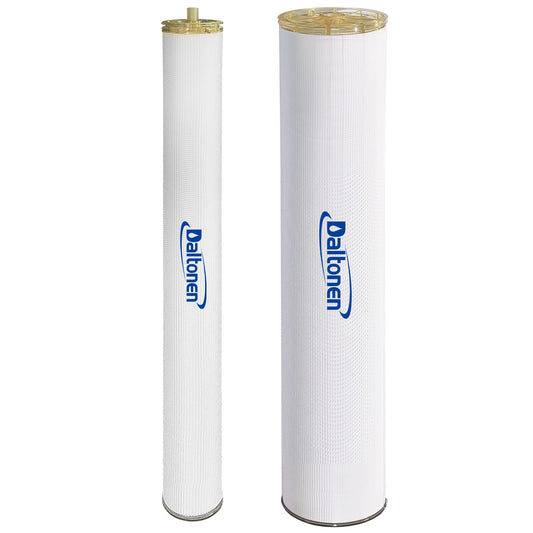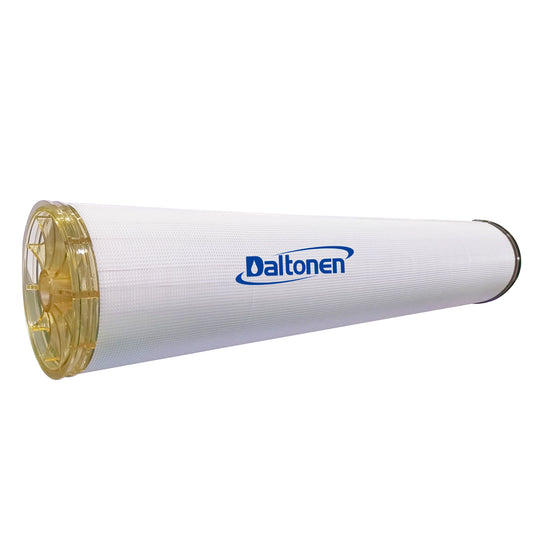How to Separate High-COD Oil-Containing Solutions Using Nanofiltration MembranesHow to Separate High-COD Oil-Containing Solutions Using Nanofiltration Membranes
04 Jun 2025
1. Characteristics of High-COD Oil-Containing Solutions
1.1 Relationship Between COD and Oil Content
In high-COD oil-containing solutions, there is a close positive correlation between chemical oxygen demand (COD) and oil content. Oil substances in the solution typically exist in the form of dispersed oil, emulsified oil, and dissolved oil, among which emulsified oil and dissolved oil contribute more significantly to the COD.
Experimental Data: In a wastewater treatment experiment at a petrochemical enterprise, when the oil content in the solution increased from 100 mg/L to 500 mg/L, the COD rose from 500 mg/L to 2500 mg/L, indicating that an increase in oil content directly leads to a significant rise in COD.
Theoretical Analysis: Oil substances consume a large amount of oxygen during the oxidation process. The carbon-hydrogen bonds in their chemical structure release a significant amount of organic matter during oxidation, which further increases the redox demand of the solution, thereby raising the COD value.
Practical Application: In the treatment of oily wastewater, accurately determining the relationship between COD and oil content is crucial for selecting the appropriate treatment process. High-COD oil-containing solutions typically require more efficient separation technologies, such as nanofiltration membrane separation, to reduce treatment costs and improve efficiency.

2. Basic Principles of Nanofiltration Membranes
2.1 Pore Size and Retention Mechanism of Nanofiltration Membranes
Nanofiltration membranes are semi-permeable membranes with selective separation capabilities, with pore sizes generally ranging from 1 nm to 10 nm. This pore size allows nanofiltration membranes to effectively retain multivalent ions, organic matter, and some monovalent ions in the solution while allowing small solute molecules and water molecules to pass through.
Pore Size Distribution: The pore size distribution of nanofiltration membranes is crucial for their separation performance. Studies have shown that the narrower the pore size distribution of nanofiltration membranes, the better their selective separation effect. For example, a commercial nanofiltration membrane with a pore size distribution concentrated between 2 nm and 4 nm can achieve a retention rate of over 90% for divalent ions and approximately 60% for monovalent ions.
Retention Mechanism: The retention mechanisms of nanofiltration membranes mainly include sieving effects and solution-diffusion effects. The sieving effect refers to the physical retention of solute molecules larger than the pore size by the nanofiltration membrane; the solution-diffusion effect is based on the differences in solubility and diffusion rates of solutes in the membrane to achieve separation. In the treatment of high-COD oil-containing solutions, nanofiltration membranes mainly retain larger oil droplets and organic matter molecules through the sieving effect, while separating dissolved oil and small organic molecules through the solution-diffusion effect.
Membrane Material and Surface Properties: The material and surface properties of nanofiltration membranes also affect their retention performance. Common nanofiltration membrane materials include polyamide, polyethersulfone, and polyvinylidene fluoride. Polyamide nanofiltration membranes have high retention rates and good chemical resistance, but their hydrophilicity is relatively poor, making them prone to membrane fouling. Surface modification techniques, such as grafting hydrophilic groups or coating hydrophilic layers, can improve the hydrophilicity and antifouling performance of nanofiltration membranes, thereby extending their service life and improving separation efficiency.
3. Nanofiltration Membrane Separation Process for High-COD Oil-Containing Solutions
3.1 Pretreatment Methods
High-COD oil-containing solutions typically have complex compositions and high concentrations of pollutants. Direct nanofiltration membrane separation may lead to membrane fouling and reduced separation efficiency. Therefore, pretreatment is an essential part of the nanofiltration membrane separation process.
Coagulation and Sedimentation: By adding coagulants such as polyaluminum chloride (PAC) or polyacrylamide (PAM) to the solution, oil droplets and suspended particles in the solution can be aggregated into larger particles, which are then removed through gravitational sedimentation. Experiments have shown that coagulation and sedimentation can remove 50%-70% of oil content and 40%-60% of COD, effectively reducing the separation burden on nanofiltration membranes.
Flotation: By combining microbubbles with oil droplets and suspended particles in the solution, they can float to the surface to form scum, thereby achieving oil-water separation. In a flotation experiment for oily wastewater treatment, flotation can remove 60%-80% of oil content and 30%-50% of COD, and the treated water quality is more suitable for nanofiltration membrane separation.
Filtration: Sand filtration and activated carbon filtration are used to pretreat the solution to remove suspended particles and some organic matter. Sand filtration can remove particles larger than 10μm, while activated carbon filtration can adsorb some dissolved oil and organic matter. After pretreatment, the turbidity of the solution is reduced, and the operating pressure and flux stability of the nanofiltration membrane are significantly improved.
3.2 Separation Operating Conditions
The operating conditions of nanofiltration membrane separation of high-COD oil-containing solutions have a significant impact on separation efficiency and membrane performance.
Operating Pressure: Operating pressure is a key factor affecting the flux and separation efficiency of nanofiltration membranes. Generally, as the operating pressure increases, the flux of the nanofiltration membrane will increase because higher pressure can push more water molecules through the membrane pores, thereby improving separation efficiency. However, excessive pressure can lead to irreversible compaction of the membrane, reducing its performance and lifespan. Experimental studies have found that for the treatment of high-COD oil-containing solutions, an operating pressure of 1.0-3.0 MPa is generally more appropriate for nanofiltration membranes. Within this pressure range, a better balance between membrane flux and separation efficiency can be achieved.
Solution Temperature: Solution temperature also has a significant impact on the separation performance of nanofiltration membranes. An increase in temperature will increase the diffusion rates of solutes and solvents in the solution, thereby increasing membrane flux. However, excessively high temperatures may lead to thermal degradation of the membrane material and volatilization of solutes, affecting separation efficiency and membrane stability. Studies have shown that the suitable temperature range for nanofiltration membrane separation of high-COD oil-containing solutions is 20-40℃. Within this temperature range, both membrane flux and retention rates can be maintained at high levels.
Solution pH Value: The pH value of the solution affects the surface charge properties of the nanofiltration membrane and the degree of ionization of solutes, thereby influencing membrane separation performance. For high-COD oil-containing solutions, the separation effect of nanofiltration membranes is better under neutral or weakly alkaline conditions (pH 7-9). At this time, the electrostatic interactions between the membrane surface charge and solute molecules are moderate, which can effectively retain oil and organic matter while maintaining high flux. Under acidic or strongly alkaline conditions, membrane performance may decline, resulting in reduced flux and unstable retention rates.
Membrane Surface Flow Rate: The membrane surface flow rate refers to the flow velocity of the solution on the surface of the nanofiltration membrane. A higher membrane surface flow rate can enhance the shear force of the solution, reducing the concentration polarization phenomenon on the membrane surface, thereby increasing membrane flux and antifouling capabilities. Experiments have shown that when the membrane surface flow rate is between 2-4 m/s, the flux and separation efficiency of the nanofiltration membrane are higher, and the membrane fouling rate is lower. Therefore, in actual operations, adjustments should be made according to specific conditions to ensure that the membrane surface flow rate is within the appropriate range.
4. Separation Effect Evaluation
4.1 COD Removal Rate
The COD removal rate of nanofiltration membrane separation of high-COD oil-containing solutions is one of the important indicators for measuring separation efficiency. Studies have shown that after pretreatment and optimization of operating conditions, the COD removal rate of nanofiltration membranes for high-COD oil-containing solutions can reach 70%-85%.
Experimental Data: In an oily wastewater treatment experiment, nanofiltration membrane separation technology was used to treat oil-containing solutions with a COD of 3000 mg/L. After coagulation and sedimentation pretreatment, the COD was reduced to around 1500 mg/L. After further treatment with nanofiltration membranes, the effluent COD was reduced to below 500 mg/L, with a removal rate of over 80%.
Influencing Factors: Operating pressure, solution temperature, solution pH value, and membrane surface flow rate all have a significant impact on the COD removal rate. Within the appropriate operating pressure and temperature ranges, the membrane flux and retention rate are higher, which is conducive to COD removal. At the same time, under neutral or weakly alkaline conditions, the separation effect of the membrane is better, and it can more effectively retain organic matter, thereby increasing the COD removal rate. In addition, a higher membrane surface flow rate can reduce the concentration polarization phenomenon on the membrane surface, increase the membrane flux and antifouling capabilities, and thus improve the COD removal rate.
4.2 Oil Retention Rate
The oil retention rate of nanofiltration membranes for high-COD oil-containing solutions is a key indicator for evaluating their separation performance. Experimental results have shown that the oil retention rate of nanofiltration membranes can reach 90%-95%.
Experimental Data: In another experiment, the treatment of oil-containing solutions with an oil content of 800 mg/L resulted in an effluent oil content of below 40 mg/L after nanofiltration membrane separation, with a retention rate of over 95%.
Influencing Factors: The pore size and distribution of nanofiltration membranes, as well as the membrane material and surface properties, have an important impact on the oil retention rate. The pore size of nanofiltration membranes generally ranges from 1 nm to 10 nm, which can effectively retain oil droplets and organic matter molecules in the solution. The hydrophilicity and antifouling performance of the membrane material also affect the oil retention rate. Surface modification techniques can improve the hydrophilicity and antifouling performance of the membrane, thereby increasing the oil retention rate. In addition, operating conditions such as operating pressure, solution temperature, solution pH value, and membrane surface flow rate also have a significant impact on the oil retention rate. Under appropriate operating conditions, nanofiltration membranes can better exert their retention function and increase the oil retention rate.
5. Factors Affecting Separation Efficiency
5.1 Operating Pressure
Operating pressure is one of the key factors affecting the separation efficiency of nanofiltration membranes for high-COD oil-containing solutions. As the operating pressure increases, the flux of the nanofiltration membrane typically increases because higher pressure can push more water molecules through the membrane pores, thereby improving separation efficiency. However, excessive pressure can lead to irreversible compaction of the membrane, reducing its performance and lifespan. Experimental studies have shown that for the treatment of high-COD oil-containing solutions, an operating pressure of 1.0-3.0 MPa is generally more appropriate for nanofiltration membranes. Within this pressure range, a better balance between membrane flux and separation efficiency can be achieved. For example, in an oily wastewater treatment experiment, when the operating pressure was increased from 1.0 MPa to 2.0 MPa, the flux of the nanofiltration membrane increased from 15 L/m²·h to 25 L/m²·h. However, when the pressure was further increased to 3.5 MPa, the flux only increased to 28 L/m²·h, and the performance of the membrane began to decline. Therefore, it is crucial to reasonably control the operating pressure to enhance the separation efficiency of nanofiltration membranes and extend their service life.
5.2 Solution pH Value
The pH value of the solution also has a significant impact on the separation efficiency of nanofiltration membranes. The pH value affects the surface charge properties of the nanofiltration membrane and the degree of ionization of solutes, thereby influencing membrane separation performance. For high-COD oil-containing solutions, the separation efficiency of nanofiltration membranes is better under neutral or weakly alkaline conditions (pH 7-9). At this pH range, the electrostatic interactions between the membrane surface charge and solute molecules are moderate, which can effectively retain oil and organic matter while maintaining high flux. Experimental data has shown that at a pH of 7, the oil retention rate of the nanofiltration membrane can reach 92%. However, when the pH is reduced to 4, the retention rate drops to 85%; when the pH is increased to 11, the retention rate also decreases to 88%. This indicates that under acidic or strongly alkaline conditions, the performance of the membrane may decline, leading to reduced flux and unstable retention rates. Therefore, in practical applications, it is advisable to adjust the pH value of the solution to the neutral or weakly alkaline range to optimize the separation efficiency of nanofiltration membranes.
5.3 Flow Rate
The membrane surface flow rate refers to the velocity of the solution flowing over the surface of the nanofiltration membrane. A higher membrane surface flow rate can enhance the shear force of the solution, reducing the concentration polarization phenomenon on the membrane surface, thereby increasing the membrane flux and antifouling capabilities. Experimental studies have shown that when the membrane surface flow rate is between 2-4 m/s, the flux and separation efficiency of the nanofiltration membrane are higher, and the membrane fouling rate is lower. For example, in an oily wastewater treatment experiment, when the membrane surface flow rate was increased from 1 m/s to 3 m/s, the flux of the nanofiltration membrane increased from 18 L/m²·h to 26 L/m²·h, and the oil retention rate also increased from 88% to 93%. A higher flow rate can effectively reduce the accumulation of pollutants on the membrane surface, lower the membrane fouling rate, thereby extending the service life of the membrane and improving separation efficiency. Therefore, in actual operations, adjustments should be made according to specific conditions to ensure that the membrane surface flow rate is within the appropriate range to optimize the separation efficiency of the nanofiltration membrane.

6. Nanofiltration Membrane Fouling and Cleaning
6.1 Types of Fouling
When treating high-COD oil-containing solutions, nanofiltration membranes are prone to fouling, which affects their performance and service life. The types of fouling mainly include organic fouling, inorganic fouling, and biological fouling.
Organic Fouling: High-COD oil-containing solutions contain a large amount of organic matter, such as oils, fatty acids, proteins, etc. These organic substances adsorb on the membrane surface or deposit within the membrane pores, forming an organic layer that hinders the passage of water molecules, leading to a decrease in membrane flux. Studies have shown that organic fouling can significantly impact the flux of nanofiltration membranes, reducing it by 30%-50%.
Inorganic Fouling: Inorganic salts in the solution, such as calcium, magnesium, and silicon, can deposit on the membrane surface to form scale, also leading to a decrease in membrane flux. Inorganic fouling typically occurs when treating oil-containing solutions with high hardness or high silicon content. The formation of scale not only reduces the membrane flux but also affects the retention performance of the membrane.
Biological Fouling: Microorganisms in oil-containing solutions can proliferate on the membrane surface, forming biofilms. Biofilms not only block membrane pores but also release metabolic products that further exacerbate membrane fouling. The impact of biological fouling on nanofiltration membranes is complex, as it not only reduces the membrane flux but also affects the stability and service life of the membrane.
6.2 Cleaning Methods
To restore the performance of nanofiltration membranes, regular cleaning is necessary. Cleaning methods mainly include physical cleaning and chemical cleaning.
Physical Cleaning:
Hydraulic Flushing: High-pressure water flow is used to flush the membrane surface, removing pollutants. Hydraulic flushing is a simple and effective cleaning method that can remove most suspended particles and some organic pollutants. Experiments have shown that hydraulic flushing can restore 50%-70% of the membrane flux.
Backwashing: Reversing the direction of water flow, flushing from the permeate side to the feed side, can more effectively remove pollutants from within the membrane pores. Backwashing is usually combined with hydraulic flushing to further enhance the cleaning effect.
Air Scrubbing: Air is introduced into the hydraulic flushing process, using the impact of air bubbles to enhance the cleaning effect. Air scrubbing can remove stubborn pollutants from the membrane surface, increasing the flux recovery rate.
Chemical Cleaning:
Acid-Alkali Cleaning: Depending on the nature of the pollutants, appropriate acid or alkali solutions are used for cleaning. Acidic solutions (such as hydrochloric acid, citric acid, etc.) can effectively dissolve inorganic scale, while alkaline solutions (such as sodium hydroxide, sodium carbonate, etc.) can decompose organic matter, causing it to detach from the membrane surface. Acid-alkali cleaning is effective, but the cleaning time and solution concentration must be carefully controlled to avoid damaging the membrane material.
Oxidizing Agent Cleaning: Oxidizing agents (such as sodium hypochlorite, hydrogen peroxide, etc.) are used to oxidize and decompose organic pollutants and microorganisms, removing biofilms. Oxidizing agent cleaning is highly effective against biological and organic fouling, but oxidizing agents may also affect the performance of the membrane material, so they should be used with caution.
Enzyme Cleaning: Specific enzymes are used to decompose organic pollutants, characterized by their specificity and effectiveness. Enzyme cleaning is a gentle method that causes less damage to the membrane material, but it is relatively costly.
Composite Cleaning: Combining multiple cleaning methods or agents can enhance the cleaning effect. For example, hydraulic flushing can be performed first to remove most pollutants, followed by acid-alkali or oxidizing agent cleaning, and finally hydraulic flushing to remove residual cleaning agents. Composite cleaning methods can be flexibly chosen according to different fouling conditions to better restore the performance of nanofiltration membranes.
7. Case Study Analysis of Practical Applications
In the field of high-COD oil-containing solution treatment, nanofiltration membrane separation technology has been widely applied and has achieved significant results. The following case studies analyze the application of nanofiltration membranes in the treatment of high-COD oil-containing solutions from different industries and specific application scenarios.
7.1 Petrochemical Industry
The petrochemical industry is one of the main sources of high-COD oil-containing solutions. In this industry, the treatment of oily wastewater has always been an important issue in environmental protection and resource recovery. The application of nanofiltration membrane technology in the treatment of oily wastewater in the petrochemical industry not only effectively reduces COD and oil content but also recovers valuable resources.
-
Case Background: A large petrochemical enterprise generates approximately 5000 m³ of oily wastewater daily, with a COD value as high as 5000 mg/L and an oil content of about 800 mg/L. Traditional treatment methods have difficulty meeting environmental discharge standards and are also costly.
-
Treatment Process:
-
Pretreatment: Coagulation and sedimentation are used to pretreat the wastewater, with the addition of polyaluminum chloride (PAC) and polyacrylamide (PAM), removing about 60% of the oil content and 40% of the COD. This reduces the oil content in the wastewater to 320 mg/L and the COD to 3000 mg/L.
-
Nanofiltration Membrane Separation: The pretreated wastewater enters the nanofiltration membrane system, with an operating pressure set at 2.0 MPa, solution temperature at 25℃, pH value adjusted to 8, and a membrane surface flow rate of 3 m/s. The nanofiltration membrane further separates the oil and organic matter in the wastewater.
-
Treatment Results:
-
COD Removal Rate: The COD value of the wastewater after nanofiltration membrane treatment is reduced to below 500 mg/L, with a removal rate exceeding 80%.
-
Oil Retention Rate: The oil content in the effluent is reduced to below 30 mg/L, with a retention rate exceeding 95%.
-
Resource Recovery: Through nanofiltration membrane separation, the recovered oil can be reused in production, reducing the enterprise's resource waste and lowering treatment costs.
-
Economic and Environmental Benefits: After adopting nanofiltration membrane technology, the enterprise saves approximately 3 million yuan annually in wastewater treatment costs, while also reducing environmental pollution, meeting the requirements for sustainable development.
7.2 Mechanical Processing Industry
The mechanical processing industry generates a large amount of oily wastewater during production, with high COD values and oil substances mainly existing in the form of emulsified oil and dissolved oil, making treatment difficult. The application of nanofiltration membrane technology in the treatment of oily wastewater in the mechanical processing industry provides an efficient and economical solution for the industry.
-
Case Background: A mechanical processing enterprise generates about 1000 m³ of oily wastewater daily, with a COD value of 3000 mg/L and an oil content of about 500 mg/L. Traditional flotation and sand filtration methods have poor treatment effects and fail to meet environmental requirements.
-
Treatment Process:
-
Pretreatment: Flotation is used to pretreat the wastewater, removing about 70% of the oil content and 50% of the COD. This reduces the oil content in the wastewater to 150 mg/L and the COD to 1500 mg/L.
-
Nanofiltration Membrane Separation: The pretreated wastewater enters the nanofiltration membrane system, with an operating pressure set at 1.5 MPa, solution temperature at 30℃, pH value adjusted to 7.5, and a membrane surface flow rate of 2.5 m/s. The nanofiltration membrane further separates the oil and organic matter in the wastewater.
-
Treatment Results:
-
COD Removal Rate: The COD value of the wastewater after nanofiltration membrane treatment is reduced to below 300 mg/L, with a removal rate exceeding 80%.
-
Oil Retention Rate: The oil content in the effluent is reduced to below 20 mg/L, with a retention rate exceeding 95%.
-
Water Quality Improvement: The treated wastewater is clear, with significantly reduced turbidity, meeting the standards for reuse. A portion of the wastewater can be reused in the production process, reducing the enterprise's water costs.
-
Economic and Environmental Benefits: After adopting nanofiltration membrane technology, the enterprise saves approximately 1 million yuan annually in wastewater treatment costs, while also reducing the demand for fresh water, achieving water resource recycling, and having significant environmental benefits.
7.3 Electronics Manufacturing Industry
The electronics manufacturing industry generates oily wastewater during production, with high COD values and containing various organic pollutants and heavy metal ions, making treatment difficult. The application of nanofiltration membrane technology in the treatment of oily wastewater in the electronics manufacturing industry provides an efficient and environmentally friendly solution for the industry.
-
Case Background: An electronics manufacturing enterprise generates about 800 m³ of oily wastewater daily, with a COD value of 4000 mg/L and an oil content of about 600 mg/L. Traditional chemical treatment methods have difficulty meeting environmental discharge standards and are also costly.
-
Treatment Process:
-
Pretreatment: Activated carbon filtration is used to pretreat the wastewater, removing about 40% of the oil content and 30% of the COD. This reduces the oil content in the wastewater to 360 mg/L and the COD to 2800 mg/L.
-
Nanofiltration Membrane Separation: The pretreated wastewater enters the nanofiltration membrane system, with an operating pressure set at 2.5 MPa, solution temperature at 28℃, pH value adjusted to 8.5, and a membrane surface flow rate of 3.5 m/s. The nanofiltration membrane further separates the oil and organic matter in the wastewater.
-
Treatment Results:
-
COD Removal Rate: The COD value of the wastewater after nanofiltration membrane treatment is reduced to below 400 mg/L, with a removal rate exceeding 85%.
-
Oil Retention Rate: The oil content in the effluent is reduced to below 30 mg/L, with a retention rate exceeding 95%.
-
Heavy Metal Removal: The nanofiltration membrane also has a certain retention effect on heavy metal ions in the wastewater, such as copper ions, with a retention rate of over 80%, further reducing the toxicity of the wastewater.
-
Economic and Environmental Benefits: After adopting nanofiltration membrane technology, the enterprise saves approximately 1.5 million yuan annually in wastewater treatment costs, while also reducing environmental pollution, meeting environmental requirements, and having significant economic and environmental benefits.
7.4 Food Processing Industry
The food processing industry also generates oily wastewater during production, with high COD values and containing a large amount of organic matter and oils. The application of nanofiltration membrane technology in the treatment of oily wastewater in the food processing industry provides an efficient and environmentally friendly solution for the industry.
-
Case Background: A food processing enterprise generates about 1200 m³ of oily wastewater daily, with a COD value of 3500 mg/L and an oil content of about 700 mg/L. Traditional biological treatment methods have difficulty meeting environmental discharge standards and are also costly.
-
Treatment Process:
-
Pretreatment: Coagulation and sedimentation are used to pretreat the wastewater, with the addition of polyaluminum chloride (PAC) and polyacrylamide (PAM), removing about 50% of the oil content and 40% of the COD. This reduces the oil content in the wastewater to 350 mg/L and the COD to 2100 mg/L.
-
Nanofiltration Membrane Separation: The pretreated wastewater enters the nanofiltration membrane system, with an operating pressure set at 1.8 MPa, solution temperature at 22℃, pH value adjusted to 7, and a membrane surface flow rate of 2 m/s. The nanofiltration membrane further separates the oil and organic matter in the wastewater.
-
Treatment Results:
-
COD Removal Rate: The COD value of the wastewater after nanofiltration membrane treatment is reduced to below 350 mg/L, with a removal rate exceeding 80%.
-
Oil Retention Rate: The oil content in the effluent is reduced to below 35 mg/L, with a retention rate exceeding 95%.
-
Water Quality Improvement: The treated wastewater is clear, with significantly reduced turbidity, meeting the standards for reuse. A portion of the wastewater can be reused in the production process, reducing the enterprise's water costs.
-
Economic and Environmental Benefits: After adopting nanofiltration membrane technology, the enterprise saves approximately 1.2 million yuan annually in wastewater treatment costs, while also reducing the demand for fresh water, achieving water resource recycling, and having significant environmental benefits.
7.5 Summary
From the practical application cases in different industries mentioned above, it can be seen that nanofiltration membrane technology has significant advantages in the treatment of high-COD oil-containing solutions. It not only efficiently removes oil substances and organic matter from wastewater, reducing COD values, but also recovers valuable resources, achieving resource recycling. In addition, nanofiltration membrane technology is easy to operate, has low operating costs, and offers good economic and environmental benefits. With continuous technological progress and expanding applications, nanofiltration membrane technology will play an increasingly important role in the treatment of high-COD oil-containing solutions.
Tags:
